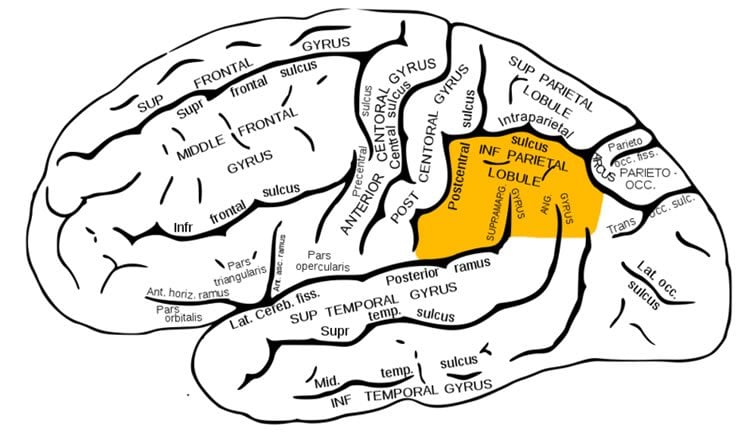Neuroscientists at the University of Sussex’s Sackler Centre and Brighton and Sussex Medical School have identified the brain network system that causes us to stumble and stall.
As musicians, figure skaters and anyone who takes a driving test will know, the anxiety of being watched can have a disastrous effect on your performance.
Now neuroscientists at the University of Sussex’s Sackler Centre and Brighton and Sussex Medical School have identified the brain network system that causes us to stumble and stall just when we least want to.
Dr Michiko Yoshie and her colleagues Professor Hugo Critchley, Dr Neil Harrison, and Dr Yoko Nagai were able to pinpoint the brain area that causes the performance mishaps during an experiment using functional magnetic resonance neuroimaging (fMRI).
Previous research has shown that people tend to exert more force when they know they are being watched. For example, pianists unconsciously press keys harder when they play in front of an audience compared to when playing alone.
In the new study, published in Scientific Reports, participants’ brain activity was monitored while carrying out a task that required them to exert a precise amount of force when gripping an object.
During the experiment, they viewed video footage of two people whom they believed were evaluating their performance. They then repeated the task while viewing video footage of two people who appeared to be evaluating the performance of someone else.
Participants reported that they felt more anxious when they believed they were being observed. Under this condition, they gripped the object harder without realising it.
Scan results showed that an area of the brain that helps us to control our fine sensorimotor functions – the inferior parietal cortex (IPC) — became deactivated when people felt they were being observed.
In fact, this part of the brain works with another region – the posterior superior temporal sulcus (pSTS) – to form what neuroscientists refer to as the action-observation network (AON). The AON is involved in “mentalisation” processes by which we infer what another person is thinking, based on his/her facial expressions and direction of gaze.
The pSTS conveys this information to the IPC, which then generates appropriate motor actions. If we feel our observer wants us to do well, we will perform well. But if we pick up negative cues, our IPC is deactivated and our performance falls apart.
Dr Yoshie said: “We realised that AON might also be related to performance anxiety because when being scrutinised, we tend to care about how the audience is feeling about us and our performance.”

For those with extreme performance anxiety, she said there has been a substantial advancement in brain stimulation techniques such as the transcranial magnetic stimulation (TMS) and transcranial direct current stimulation (tDCS), which could activate desired behaviour.
And there are also now various types of neurofeedback training, which can help people to learn how to control their own brain activity.
She added: “It’s important to believe that the audience is supporting you and wishing for your successful performance.
To strengthen such belief, you should sometimes have opportunities to perform in front of your supporters. For example, before an actual public performance, a musician could perform in front of his/her family and close friends and receive a lot of applause. Such experience would help you to induce a desirable activation pattern in your brain and boost self-confidence.”
Dr Yoshie is now at the National Institute of Advanced Industrial Science and Technology (AIST), Tsukuba, Japan.
Funding: Funding provided by Grant-in-Aid for Scientific Reports.
Source: Jacqui Bealing – University of Sussex
Image Source: The image is in the public domain
Original Research: Full open access research for “Why I tense up when you watch me: Inferior parietal cortex mediates an audience’s influence on motor performance” by Michiko Yoshie, Yoko Nagai, Hugo D. Critchley and Neil A. Harrison in Scientific Reports. Published online January 20 2016 doi:10.1038/srep19305
Abstract
Why I tense up when you watch me: Inferior parietal cortex mediates an audience’s influence on motor performance
The presence of an evaluative audience can alter skilled motor performance through changes in force output. To investigate how this is mediated within the brain, we emulated real-time social monitoring of participants’ performance of a fine grip task during functional magnetic resonance neuroimaging. We observed an increase in force output during social evaluation that was accompanied by focal reductions in activity within bilateral inferior parietal cortex. Moreover, deactivation of the left inferior parietal cortex predicted both inter- and intra-individual differences in socially-induced change in grip force. Social evaluation also enhanced activation within the posterior superior temporal sulcus, which conveys visual information about others’ actions to the inferior parietal cortex. Interestingly, functional connectivity between these two regions was attenuated by social evaluation. Our data suggest that social evaluation can vary force output through the altered engagement of inferior parietal cortex; a region implicated in sensorimotor integration necessary for object manipulation, and a component of the action-observation network which integrates and facilitates performance of observed actions. Social-evaluative situations may induce high-level representational incoherence between one’s own intentioned action and the perceived intention of others which, by uncoupling the dynamics of sensorimotor facilitation, could ultimately perturbe motor output.
“Why I tense up when you watch me: Inferior parietal cortex mediates an audience’s influence on motor performance” by Michiko Yoshie, Yoko Nagai, Hugo D. Critchley and Neil A. Harrison in Scientific Reports. Published online January 20 2016 doi:10.1038/srep19305







